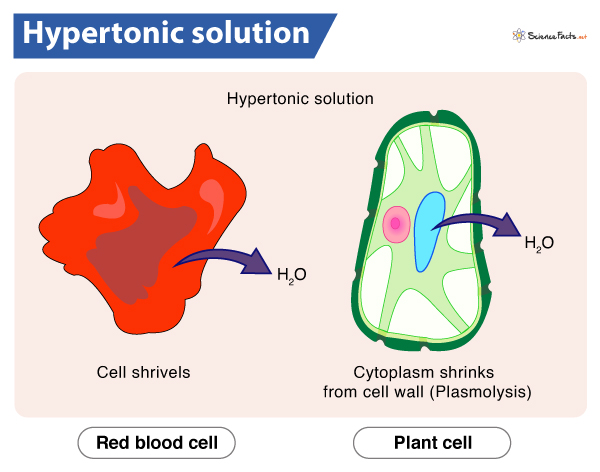Whether a solution is hypertonic or not is measured by comparing the concentration of a solution with another, generally cell sap. Seawater, sugar syrup, corn syrup are some common examples of hypertonic solutions.
What it Does in a Cell
What Happens to a Cell When Placed in a Hypertonic Solution
Examples of Hypertonic Solution
Hypertonic vs. Hypotonic Solution
Thus, an equal osmotic pressure exists in both the cell and its surroundings. By this spontaneous homeostatic process, the cell maintains its rigidity and solute concentration. Following the rule of osmosis, water will start to move from its region of higher concentration to lower across the cell membrane, i.e., from the cell to the external medium (exosmosis). Thus a cell maintains the equilibrium of water content both internally and externally. For instance, if the external medium of kidney cells turns hypertonic, the hypothalamus releases Vasopressin (ADH, antidiuretic hormone). It increases the water permeability of the renal collecting duct cells, allowing more water to get reabsorbed from the urine of the collecting duct to blood. As seawater is hypertonic, it tends to pull out water from the cells of aquatic organisms living there. So, marine animals, such as sea turtles, need to maintain a more hypertonic internal environment to survive. As a result, they prevent excessive water loss and remove excess salt through the salt gland to maintain osmotic balance.
In Plants
In plants, if the external medium becomes hypertonic, water moves out of the cell following its concentration gradient. As a result, the cell cytoplasm gets shrunk and detaches itself from the cell membrane. This phenomenon is known as plasmolysis, and the cell is called plasmolyzed or flaccid. Overall, the plant appears wilted. That is why plants usually prefer a hypotonic environment over a hypertonic one. As in hypotonic surroundings, water enters into the cell, allowing plants to maintain structural rigidity.
At Cellular Level
Red Blood Cells (RBCs) form irregular notched surfaces (crenation) due to excessive water loss upon exposure to a hypertonic solution.
